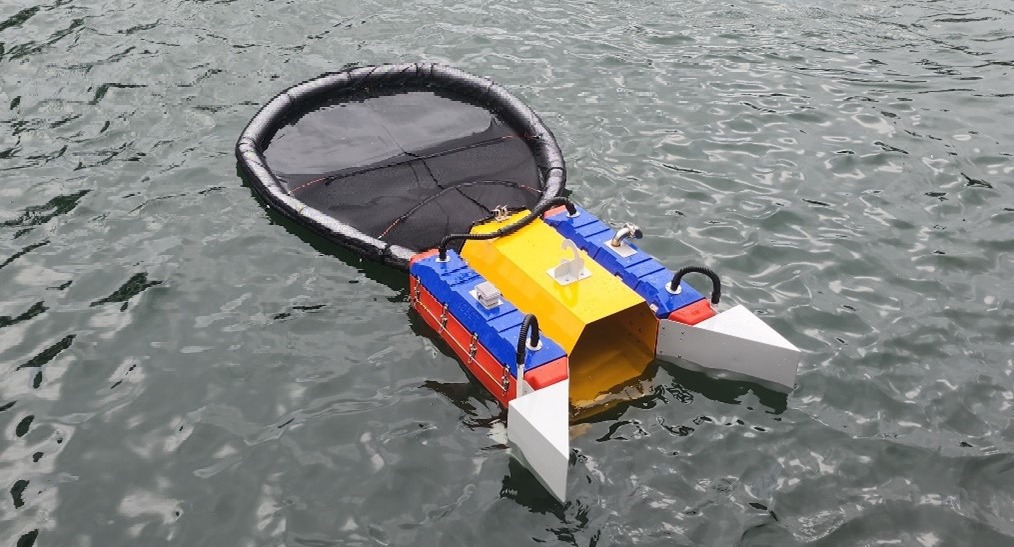Autonomous Marine Pollutants Recovery Robot
KEY INFORMATION
TECHNOLOGY OVERVIEW
Pollution in oceans and rivers is a global concern due to contaminants like oil spills and microplastics, which harm biodiversity. In response to marine pollutions, extensive human and technological resources are typically deployed to mitigate the situation, this includes absorbent, oil skimmer machineries, drones or vessels depending on the complexity of required clean-ups, resulting it being costly and time consuming.
Designed and developed by a Korea-based startup, the technology proposed herein is a robot deployed onto the water surface to efficiently recovers pollutants autonomously with minimum human intervention. Unlike conventional pollution recovery equipment that uses additional devices connected by hoses, the robot combines the recovery of pollutant, transportation and storage of pollutants into a single robot device that can travel up to 1000 m range.
The robot is equipped with a proprietary hydrophilic ratchet-based contaminant recovery technology, which generates a flow that sucks water through the movement of a hydrophilic material and controls the attachment and detachment of contaminants on the surface of the material by capillary force. This proprietary recover technology enables the robot to recover bunker fuel spills including high viscosity low sulfur fuel oil (LSFO), low viscosity heavy fuel oil (HFO), diesel, as well as microplastics in an efficient manner.
The technology owner is seeking to collaborate with companies that provides marine pollution control/recycling service and government agencies to conduct a pilot trial in Singapore, with an option to further co-develop and integrate technologies that enhances the capabilities of the robot, such as identification of marine pollutants.
TECHNOLOGY FEATURES & SPECIFICATIONS
Two solutions were offered:
- Oil skimming robot:
- 100 kg remote controlled robot of up to 1000 m operating range.
- About 1.0 ton of recovered oil/contaminant storage tank and process up to 26.6 kL/h.
- Capable of unmanned/autonomous/remote operation with minimum supervision.
- Field demonstration performed in river, harbour, and open sea in Asia and Middle East.
- Ocean cleaner robot:
- 45 kg remote controlled robot of up to 1000 m operating range.
- About 0.2 ton of contaminant storage tank and process up to 2 ton/h.
Both solutions work in tandem with an air drone that pins a GPS location where pollutants are found. The information is then relayed to the robot for its autonomous navigation to its target location for its operation.
POTENTIAL APPLICATIONS
The robots can be deployed for floating pollutants recovery from the surface of the water, such as rivers, beams, dams, and oceans. Pollutants that can be recovered include high viscosity low sulfur fuel oil (LSFO), low viscosity heavy fuel oil (HFO), diesel, microplastics of 0.001-5 mm, etc.
Unique Value Proposition
A ratchet-shaped material that enhances the effect of attracting water to hydrophilic porous materials to optimise the recovery of marine pollutants in an autonomous robot.

